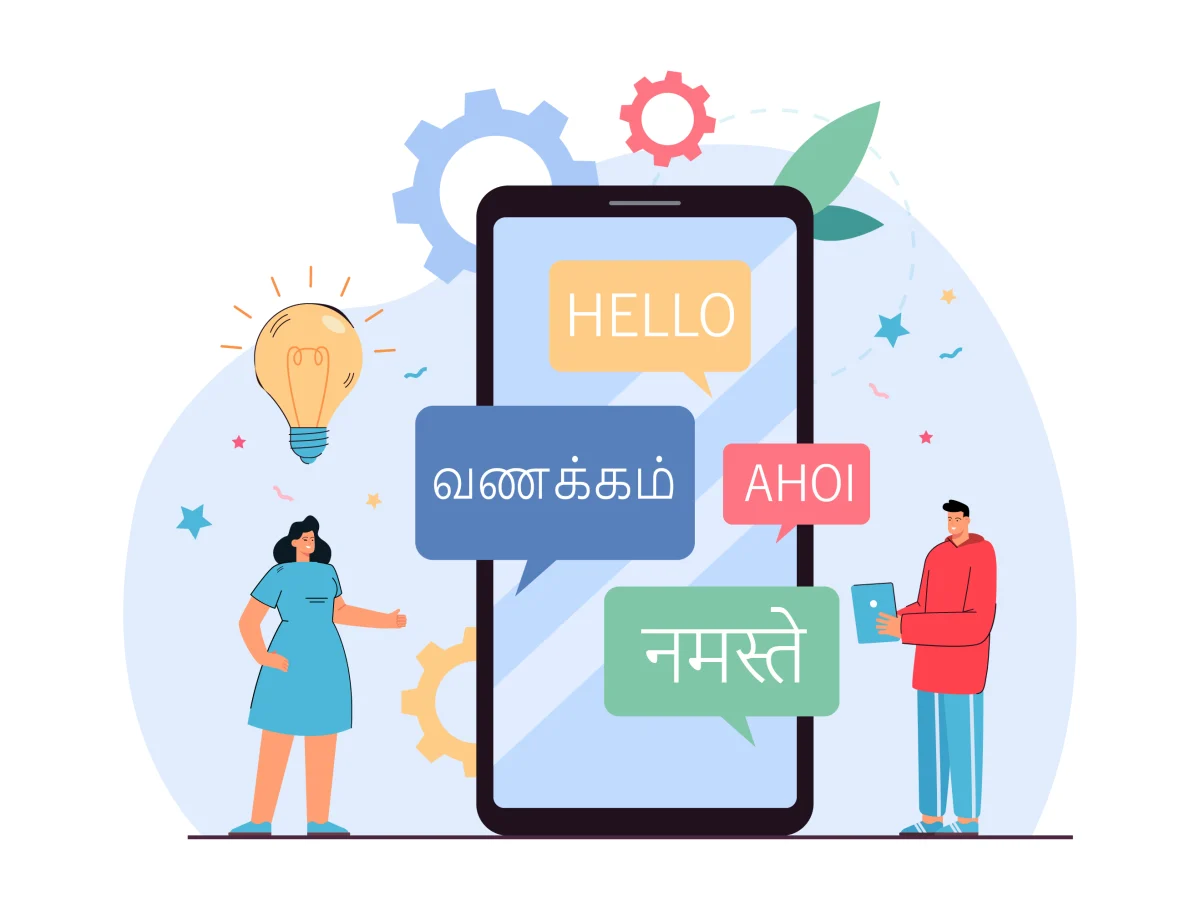A chatbot that suggests deep-dish pizza to someone in Mumbai. A virtual assistant in Kolkata that doesn’t understand Bengali. A customer support bot that responds to Hinglish with stiff, textbook Hindi. These aren’t just awkward interactions—they’re missed business opportunities.
Despite the rise of AI-driven communication, most chatbots and virtual assistants remain generic, westernized, and disconnected from the cultural and linguistic realities of their users. They fail not because of their technology, but because of their lack of regionalization—the ability to adapt to language, dialect, and cultural context.
This is where professional translation services, regional content review services, and Indian language translation services can become game-changers. By developing regionalized bot personas, businesses can create AI assistants that feel intuitive, natural, and locally relevant. This leads to better customer engagement, stronger brand trust, and higher conversion rates.
Let’s explore why regionalized bot persona development is the next frontier in AI-driven customer interactions.
Why One-Size-Fits-All Bots Are Failing
Ever chatted with an AI assistant that just didn’t get you? Chances are, that bot was designed with a generic, globalized persona that fails to consider cultural differences, linguistic nuances, or local preferences. AI chatbots have come a long way, but most still struggle to sound human—and more importantly, relatable.
The Cultural Disconnect
Chatbots are meant to simulate human conversation, but when they lack cultural fluency, they alienate rather than engage users.
When the first AI bot was launched in India, it failed to understand local names, accents, and colloquialisms, making the experience frustrating for users. It wasn’t until the brand introduced localized speech models that the multilingual chatbot became more effective in the Indian market. In industries like banking, e-commerce, or customer support, trust and clarity are critical. If a financial services chatbot misunderstands a loan inquiry due to regional language differences, the customer may abandon the interaction altogether.
Lost in (Machine) Translation
A literal translation isn’t the same as natural communication. While machine translation tools have improved, they still miss cultural nuances, slang, and context-specific meanings.
Regional Indian language translation services and multilingual content editing have thus become essential, ensuring that bots communicate in a way that feels intuitive and human rather than robotic or awkward. To truly connect with users, AI bots need regionalized personas, which are personalities that align with the linguistic, cultural, and behavioral expectations of different audiences.
- Linguistic Adaptation: Ensuring AI bots can communicate fluently in multiple dialects and regional languages.
- Cultural Calibration: Teaching bots local humor, pop culture references, and common expressions.
- Behavioral Alignment: Making AI interactions feel natural, engaging, and contextually relevant for different audiences.
How to Build a Regionalized Bot Persona
Creating an effective regionalized AI assistant is about ensuring the bot thinks, speaks, and behaves in a way that resonates with users.
Step 1: Define the Bot’s Identity
- What is its role?
- Who is its target audience?
- What tone of voice should it use?
Step 2: Integrate Regional Language Capabilities
- Work with Indian language translation services to build a bot that understands dialects, hybrid languages (e.g., Hinglish, Tanglish), and local expressions.
- Optimize multilingual content editing to ensure natural, human-like conversations.
Step 3: Cultural Contextualization
Incorporate pop culture references, regional festivals, and humor into the bot’s responses.
Use regional content review services to test the bot’s effectiveness across different cultural groups.
Step 4: Continuous Learning & Refinement
- Regularly update the bot’s content editing and proofreading processes to improve accuracy and engagement.
- Use AI-driven sentiment analysis to refine responses based on user feedback.
The Future of AI Lies in Localization
AI bots have the potential to revolutionize customer interactions. But their effectiveness depends on how well they can understand and adapt to regional nuances. Businesses that invest in regionalized bot persona development will not only enhance customer engagement but also establish stronger brand loyalty in diverse markets.
At magnon sancus, we specialize in professional translation services, Indian language translation services, and multilingual content editing, ensuring that AI-driven conversations feel as natural and culturally relevant as possible. The future of AI isn’t just smart—it’s deeply local.
So, next time you chat with a bot, ask yourself: Does it really understand me? If not, it might be time for a regional upgrade.
March 3, 2025 — magnon
